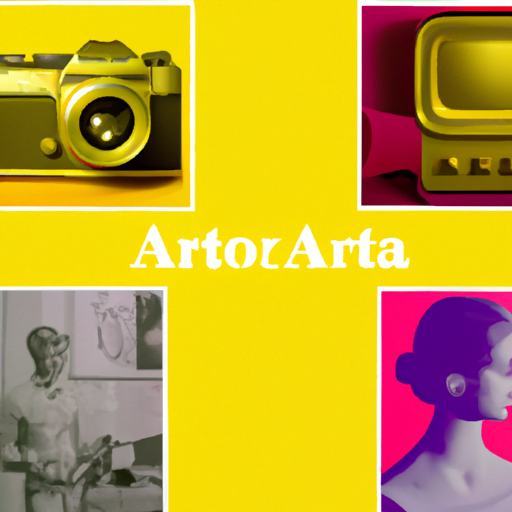-
Table of Contents
AI-Driven Retro Design: Nostalgia in a Digital Age
In today’s fast-paced digital world, where technology is constantly evolving, it is not uncommon for people to feel a sense of nostalgia for the past. This longing for the “good old days” has given rise to a trend known as retro design. Retro design refers to the use of elements and aesthetics from the past to create a sense of nostalgia and evoke positive emotions in the present. With the advent of artificial intelligence (AI), designers now have a powerful tool at their disposal to create AI-driven retro designs that resonate with audiences. In this article, we will explore the concept of AI-driven retro design and its impact in a digital age.
The Power of Nostalgia
Nostalgia is a powerful emotion that can transport us back in time and evoke positive memories and emotions. It is a longing for a time when things seemed simpler and more familiar. Nostalgia has been shown to have a positive impact on our well-being, reducing stress and increasing feelings of happiness and connectedness. It is no wonder, then, that designers have tapped into the power of nostalgia to create designs that resonate with audiences.
One of the key elements of retro design is the use of visual cues from the past. These cues can include vintage typography, color palettes, and graphic styles that were popular in a particular era. By incorporating these elements into their designs, designers can create a sense of familiarity and nostalgia that resonates with audiences.
The Role of AI in Retro Design
Artificial intelligence has revolutionized many industries, and design is no exception. With AI, designers can now create AI-driven retro designs that are more authentic and accurate than ever before. AI algorithms can analyze vast amounts of data from the past, including images, videos, and design trends, to understand the key elements of retro design and generate new designs that capture the essence of a particular era.
One example of AI-driven retro design is the use of generative adversarial networks (GANs). GANs are a type of AI algorithm that consists of two neural networks: a generator and a discriminator. The generator creates new designs based on the data it has been trained on, while the discriminator evaluates the authenticity of these designs. Through an iterative process, the generator learns to create designs that are indistinguishable from those of a particular era.
Case Studies: AI-Driven Retro Design in Action
Several companies have already embraced AI-driven retro design to create products and experiences that resonate with their target audiences. Let’s take a look at some notable case studies:
1. Coca-Cola’s Retro Packaging
Coca-Cola, one of the world’s most iconic brands, has a long history of using retro design elements in its packaging. In 2018, the company partnered with an AI design firm to create a limited edition series of retro-inspired cans and bottles. The AI algorithm analyzed Coca-Cola’s design archives and generated new designs that captured the essence of different eras, from the 1920s to the 1990s. The result was a collection of packaging that not only evoked nostalgia but also appealed to collectors and fans of the brand.
2. Spotify’s Time Capsule
Music streaming platform Spotify used AI-driven retro design to create a personalized playlist called “Time Capsule.” The algorithm analyzed users’ listening history and generated a playlist of songs from their past, evoking a sense of nostalgia and taking them on a musical journey down memory lane. The Time Capsule feature was a hit among Spotify users, with many sharing their personalized playlists on social media and expressing their delight at rediscovering old favorites.
The Future of AI-Driven Retro Design
As AI technology continues to advance, we can expect to see even more innovative applications of AI-driven retro design. Here are some potential future developments:
- AI-generated retro video games that capture the essence of classic games from the past.
- AI-driven retro fashion designs that combine vintage aesthetics with modern trends.
- AI-generated retro advertisements that evoke nostalgia and resonate with audiences.
- AI-powered virtual reality experiences that recreate iconic moments from the past.
With AI, designers have a powerful tool at their disposal to create authentic and engaging retro designs. By tapping into the power of nostalgia, AI-driven retro design can create emotional connections with audiences and provide a sense of familiarity and comfort in a digital age.
Conclusion
AI-driven retro design is a fascinating trend that combines the power of nostalgia with the capabilities of artificial intelligence. By analyzing data from the past, AI algorithms can generate new designs that capture the essence of different eras and evoke positive emotions in audiences. From Coca-Cola’s retro packaging to Spotify’s Time Capsule, companies are already leveraging AI-driven retro design to create products and experiences that resonate with their target audiences. As AI technology continues to advance, we can expect to see even more innovative applications of AI-driven retro design in the future. In a digital age where everything is constantly changing, AI-driven retro design provides a sense of familiarity and comfort that is increasingly valued by consumers.
